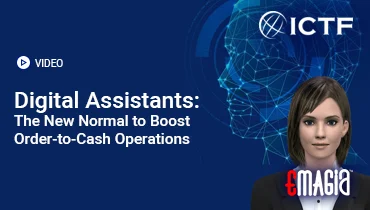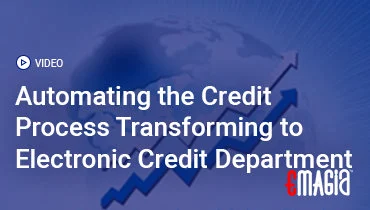Introduction
In the dynamic landscape of financial management, matching invoices stands as a cornerstone for ensuring accuracy, efficiency, and transparency in accounts receivable processes. This comprehensive guide delves into the intricacies of invoice matching, exploring its types, benefits, challenges, and the transformative impact of automation. By understanding and implementing effective invoice matching strategies, businesses can streamline their accounts receivable operations, mitigate risks, and foster stronger supplier relationships.
Understanding Invoice Matching
What is Invoice Matching?
Invoice matching is the process of cross-verifying invoices with corresponding purchase orders (POs) and receiving reports to ensure consistency and accuracy before payment processing. This verification step is crucial in preventing discrepancies, overpayments, and fraudulent activities.
Types of Invoice Matching
Two-Way Matching
Involves comparing the invoice with the purchase order to confirm that the billed items and amounts align with what was ordered.
Three-Way Matching
Extends the verification by including the receiving report, ensuring that the goods or services billed were indeed received as per the PO.
Four-Way Matching
Adds an inspection report to the process, verifying the quality and condition of the received goods or services, thus providing an additional layer of control.
Importance of Invoice Matching in Accounts Receivable
Enhancing Financial Accuracy
By meticulously matching invoices with POs and receiving reports, businesses can ensure that payments are made only for goods and services that were actually ordered and received, thereby maintaining financial integrity.
Preventing Fraud and Overpayments
Invoice matching acts as a safeguard against fraudulent invoices and duplicate payments, protecting the company’s financial resources.
Strengthening Supplier Relationships
Accurate and timely payments resulting from effective invoice matching foster trust and reliability between businesses and their suppliers.
Challenges in Manual Invoice Matching
Data Inconsistencies
Manual entry errors can lead to mismatches between invoices, POs, and receiving reports, causing delays and payment errors.
High Volume of Transactions
As businesses scale, the volume of invoices increases, making manual matching time-consuming and prone to oversight.
Lack of Standardization
Variations in invoice formats from different suppliers can complicate the matching process, leading to inefficiencies.
Embracing Automation in Invoice Matching
Benefits of Automated Invoice Matching
Increased Efficiency
Automation accelerates the matching process, reducing the time and labor required for manual verification.
Improved Accuracy
Automated systems minimize human errors, ensuring more accurate matching and payment processing.
Enhanced Visibility
Real-time tracking and reporting capabilities provide better oversight of the invoice processing workflow.
Technologies Driving Automation
Optical Character Recognition (OCR)
OCR technology extracts data from invoices, facilitating automated comparison with POs and receiving reports.
Artificial Intelligence (AI)
AI algorithms can learn from historical data to improve matching accuracy and predict potential discrepancies.
Best Practices for Streamlining Invoice Matching
Standardize Invoice Formats
Encourage suppliers to adhere to a standardized invoice format to simplify the matching process.
Implement Robust Controls
Establish clear procedures and approval hierarchies to ensure that only verified invoices are processed for payment.
Regular Training and Updates
Keep the accounts payable team informed about the latest tools and practices in invoice matching to maintain efficiency.
How Emagia Enhances Invoice Matching and Accounts Receivable Processes
Emagia offers a comprehensive suite of tools designed to automate and optimize the accounts receivable process, including invoice matching. By leveraging AI and machine learning, Emagia’s platform can:
- Automate Data Extraction: Utilize OCR and AI to extract and validate data from invoices, reducing manual entry errors.
- Streamline Matching Processes: Automatically match invoices with POs and receiving reports, accelerating the approval workflow.
- Enhance Visibility: Provide real-time dashboards and analytics for better monitoring and decision-making.
- Improve Cash Flow Management: Facilitate timely payments and optimize working capital through efficient invoice processing.
By integrating Emagia’s solutions, businesses can significantly reduce processing times, minimize errors, and strengthen their financial operations.
Frequently Asked Questions
What is the difference between two-way and three-way invoice matching?
Two-way matching involves comparing the invoice with the purchase order, while three-way matching adds the receiving report to ensure that the goods or services were actually received.
How does automation improve the invoice matching process?
Automation reduces manual errors, accelerates processing times, and provides real-time visibility into the invoice workflow, leading to more efficient and accurate accounts payable operations.
What technologies are commonly used in automated invoice matching?
Technologies such as Optical Character Recognition (OCR), Artificial Intelligence (AI), and machine learning are commonly employed to extract data and automate the matching process.
Can small businesses benefit from automated invoice matching?
Yes, small businesses can significantly benefit from automation by reducing manual workloads, minimizing errors, and improving cash flow management.
How does invoice matching prevent fraud?
By ensuring that payments are only made for verified and received goods or services, invoice matching acts as a control mechanism against fraudulent invoices and unauthorized payments.
Conclusion
Effective invoice matching is integral to maintaining financial accuracy, preventing fraud, and optimizing the accounts receivable process. By understanding the various types of invoice matching, recognizing the challenges of manual processes, and embracing automation technologies, businesses can streamline their operations and enhance financial performance. Solutions like Emagia provide the tools necessary to transform invoice matching from a cumbersome task into a strategic advantage.



